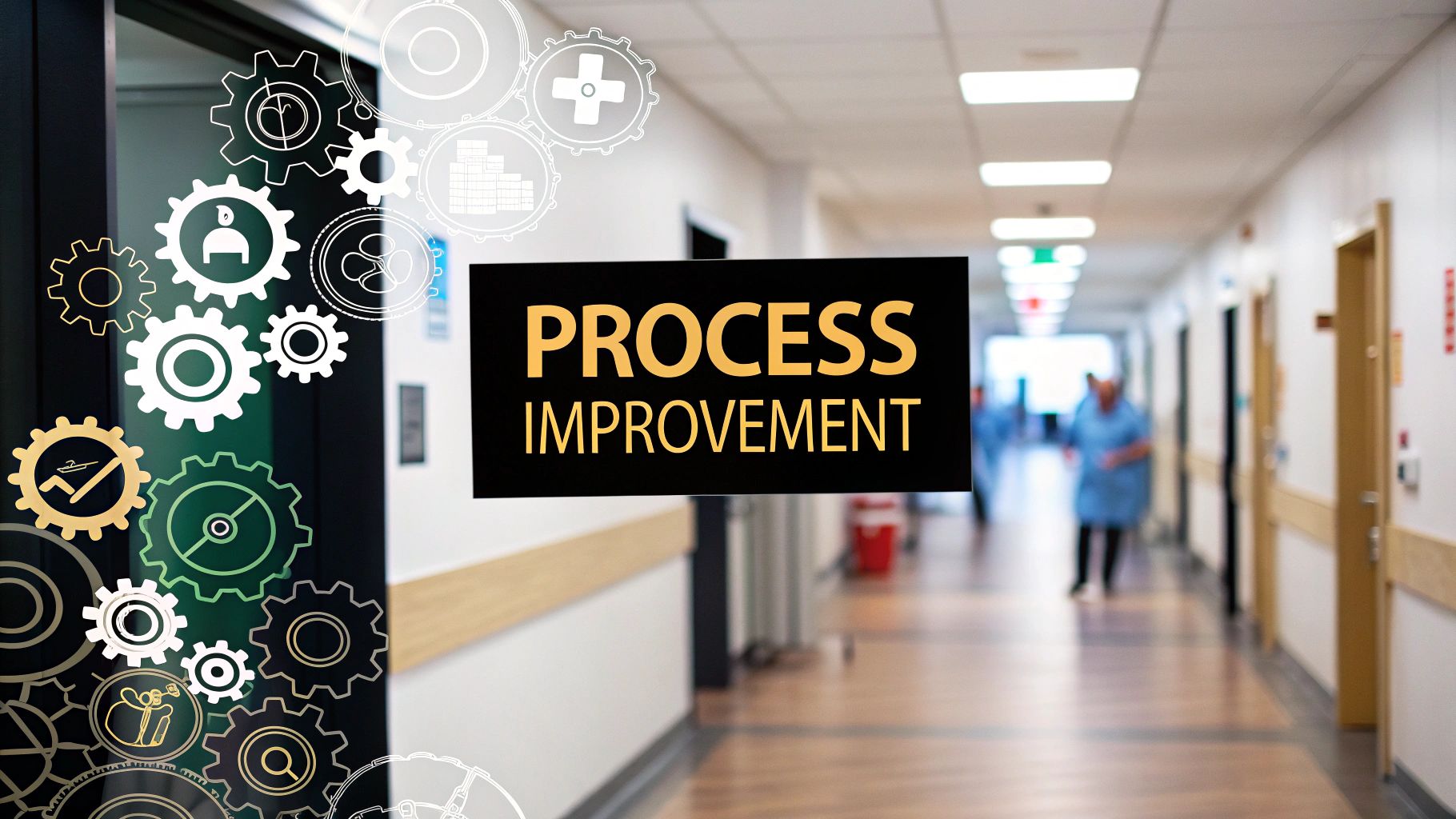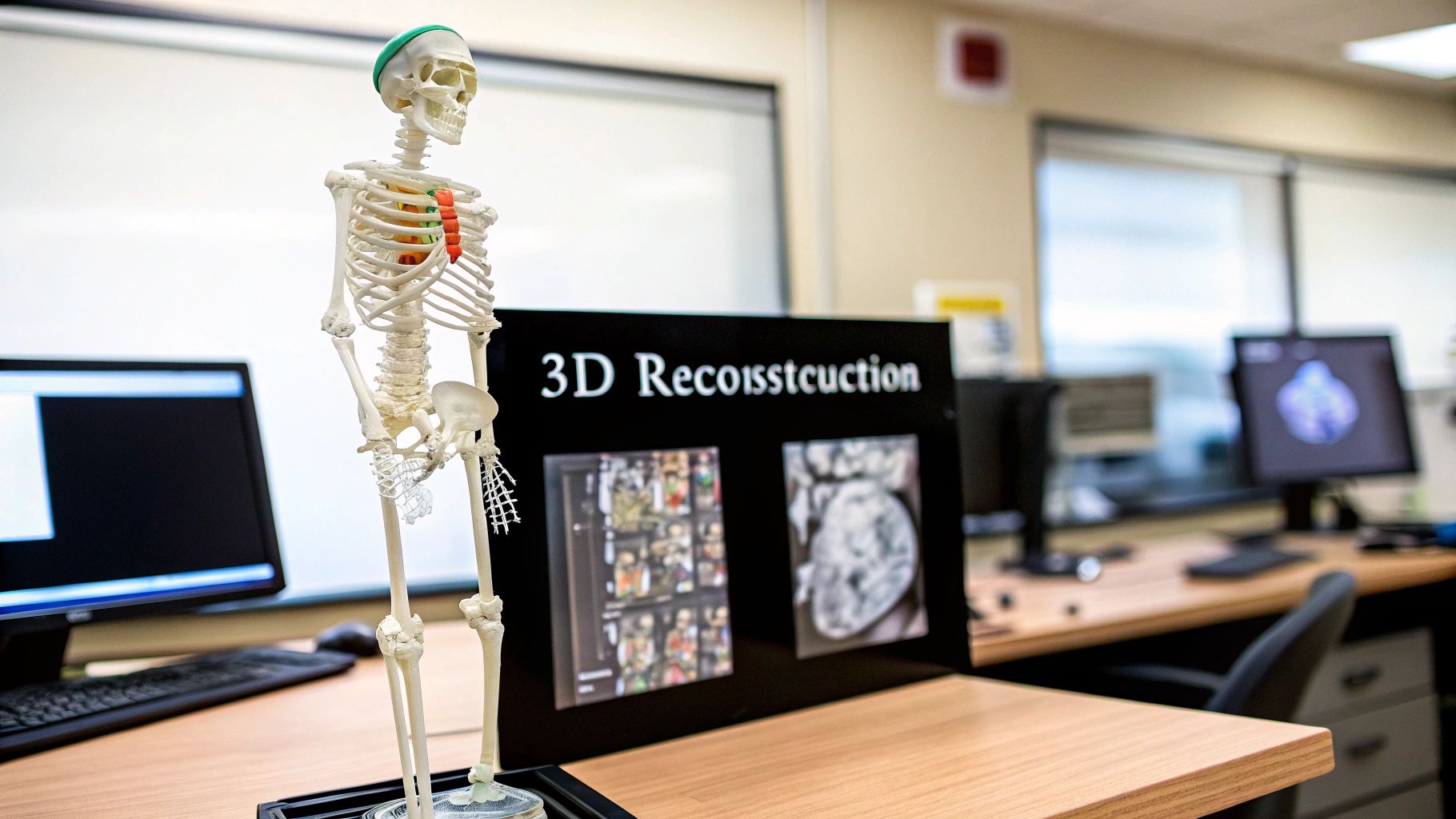Understanding NIfTI and DICOM: Why Format Matters
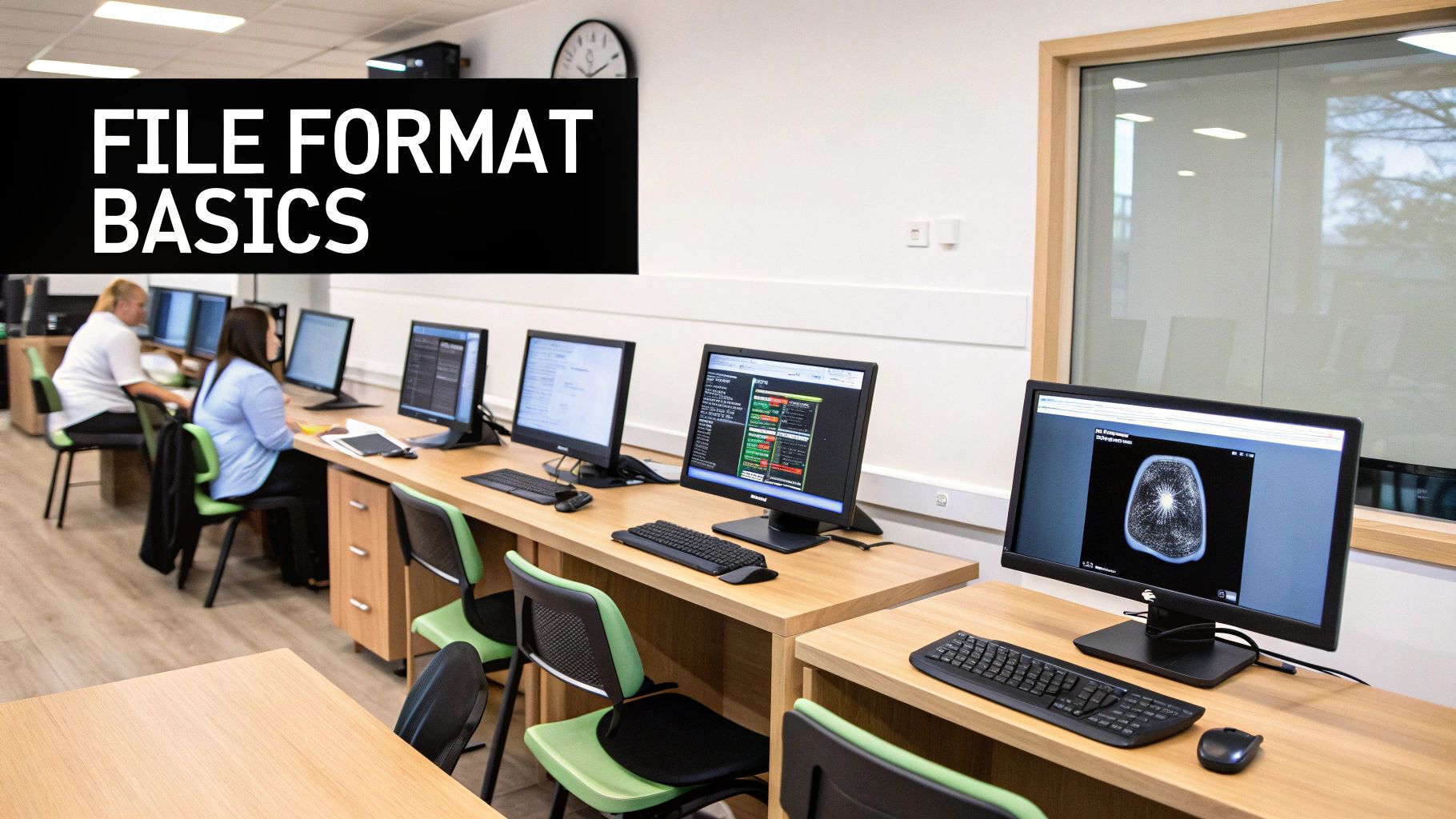
Selecting the appropriate image format is paramount in medical imaging, especially when working with neuroimaging data. Two formats predominate in this field: NIfTI (Neuroimaging Informatics Technology Initiative) and DICOM (Digital Imaging and Communications in Medicine). Both handle complex image data, but they address different needs. Understanding their respective strengths and weaknesses is key to establishing efficient workflows.
NIfTI: The Research Standard
NIfTI is analogous to a lightweight sports car: fast, efficient, and ideal for research environments. It emphasizes simplicity and ease of use, making it perfectly suited for image analysis. This streamlined structure enables faster loading and processing times, invaluable when handling the large datasets frequently encountered in neuroimaging studies. NIfTI enjoys widespread support across various neuroimaging analysis software packages, further solidifying its position as a research staple.
DICOM: The Clinical Cornerstone
DICOM, conversely, is more like a heavy-duty truck: robust, comprehensive, and designed to meet the rigorous demands of clinical settings. It incorporates extensive metadata, including patient demographics, acquisition parameters, and study information, all of which are vital for patient care and regulatory compliance. This rich metadata makes DICOM the established standard for clinical imaging, integration with PACS (Picture Archiving and Communication Systems), and interoperability between various medical devices. However, this comprehensiveness can result in larger file sizes and potentially slower processing speeds compared to NIfTI.
Bridging the Gap: NIfTI to DICOM Conversion
The need to convert between NIfTI and DICOM often arises when bridging the gap between research and clinical practice. For instance, researchers might process data in NIfTI format and then convert it to DICOM for integration into a hospital's PACS. This enables clinicians to access research findings directly within their established workflows.
NIfTI files are prevalent in neuroimaging research due to their simplified structure and ease of analysis compared to DICOM. By 2016, NIfTI became a standard format for research, supporting advanced visualization and processing techniques. Tools like dcm2niix facilitate the conversion from DICOM to NIfTI.
However, the reverse conversion, from NIfTI to DICOM, is less common and might not preserve all original DICOM metadata. This means that while conversion from NIfTI to DICOM is feasible, retaining critical metadata requires careful planning and the use of specialized tools. Learn more about this complex process here. Understanding the nuances of each format is essential for choosing the right conversion strategy.
When NIfTI to DICOM Conversion Becomes Essential
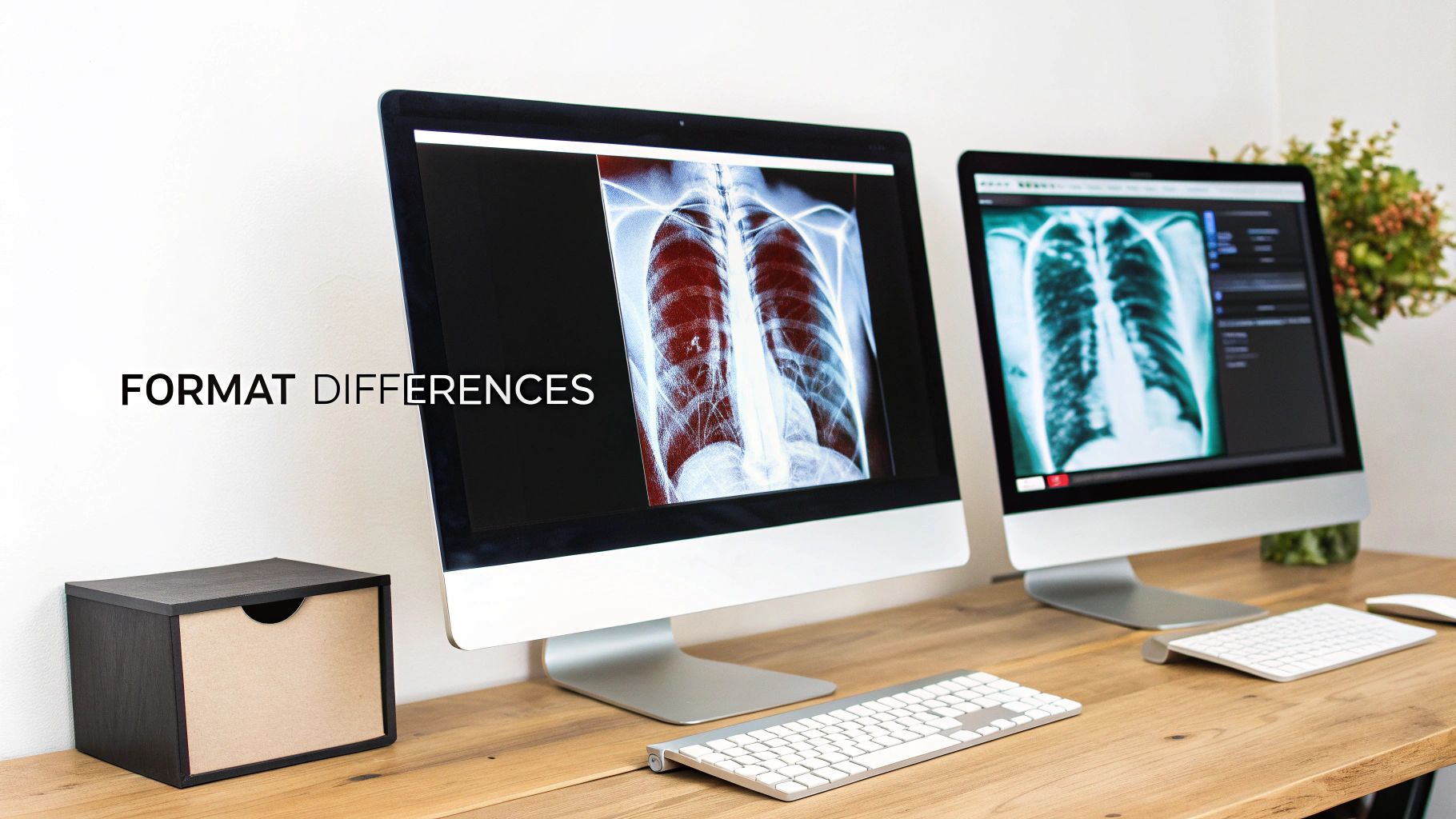
While the NIfTI format excels in research environments, the healthcare world often relies on DICOM. This difference creates situations where converting NIfTI files to DICOM becomes crucial for practical use and collaboration, bridging the gap between research insights and clinical practice.
Integrating With Clinical Workflows
A primary reason for NIfTI to DICOM conversion is PACS integration. Hospitals and clinics depend on Picture Archiving and Communication Systems (PACS) for managing medical images. These systems primarily use the DICOM format.
Converting NIfTI images to DICOM ensures clinicians can access research data directly within their familiar PACS workflows. This streamlined access facilitates faster image interpretation and potential application to patient care.
Facilitating Clinical Trials
NIfTI to DICOM conversion is also vital for clinical trials. Research data, often collected and processed in NIfTI, needs to be integrated into trial documentation and analysis.
Using DICOM in these instances ensures consistency and compatibility with established clinical systems. This standardization streamlines data exchange and allows for more comprehensive analysis within the clinical trial framework.
Enabling Multidisciplinary Collaboration
Multidisciplinary collaboration greatly benefits from NIfTI to DICOM conversion. When specialists like radiologists, neurologists, and researchers work together, a common image format like DICOM promotes efficient data sharing and communication.
This shared format simplifies the process of disseminating findings and strengthens collaboration across medical disciplines.
This conversion, though less common than DICOM to NIfTI, is key for integrating research findings into clinical settings. For example, when researchers need to upload processed images to PACS, tools like nii2dcm or pixelmed are frequently used.
Maintaining metadata integrity during this process, however, can be challenging due to the complexities of the DICOM standard. Learn more about the challenges and available tools in this Neurostars discussion. Selecting the right tools and strategies is essential for successful NIfTI to DICOM conversion.
Conversion Tools That Actually Deliver Results
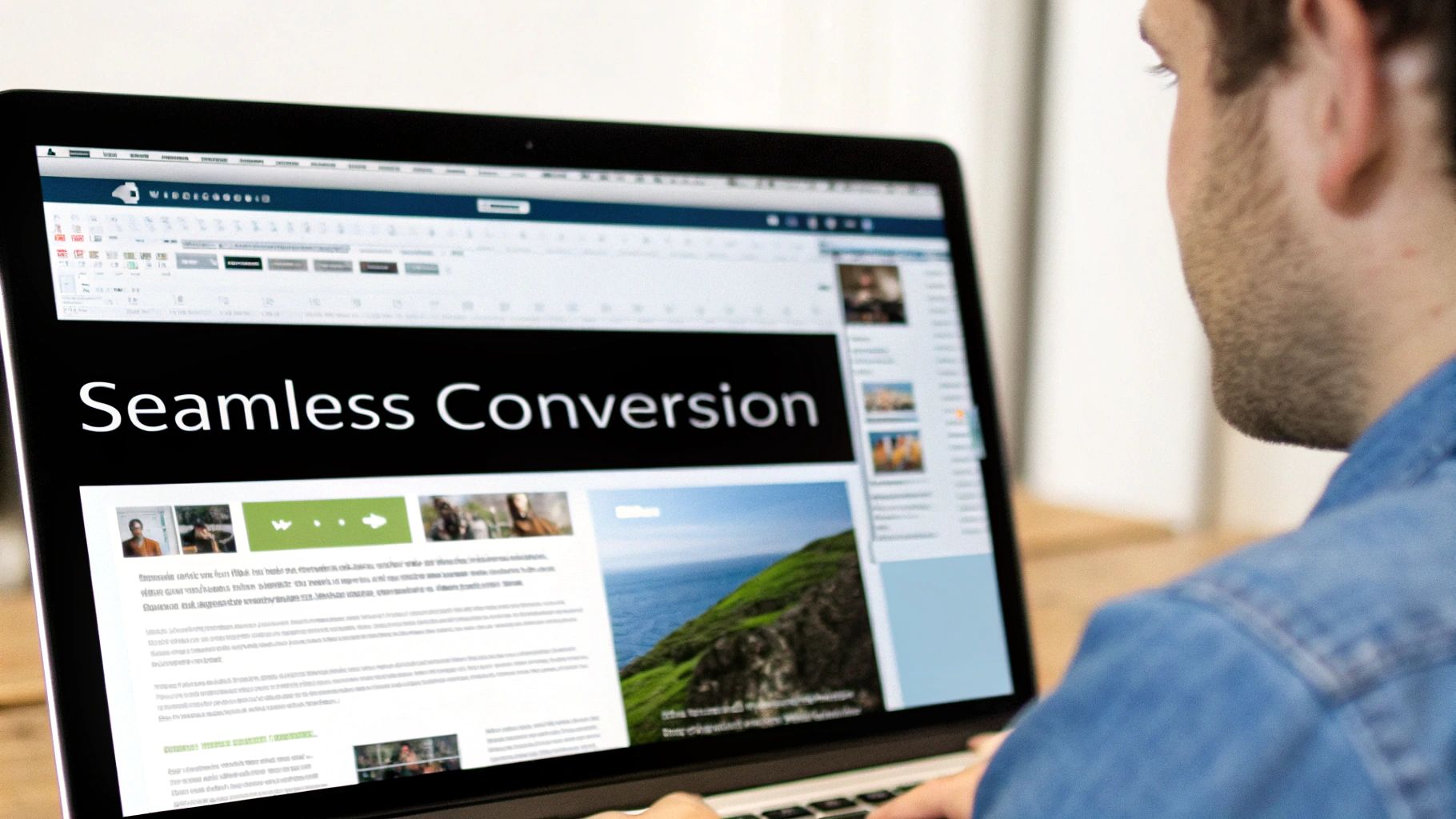
Converting NIfTI to DICOM data successfully depends on choosing the right tool. This requires careful consideration of several factors, including metadata preservation, ease of use, and compatibility with your current systems. Let's explore some popular choices and examine their advantages and disadvantages.
Open-Source Solutions: Flexibility and Control
Open-source tools offer considerable control over the NIfTI to DICOM conversion process. They are typically free to use and can be adapted to meet various research requirements.
-
3D Slicer: 3D Slicer is a robust platform that offers much more than simple format conversion. It provides a wide range of image processing and visualization features, making it a valuable asset for researchers working directly with neuroimaging data. Its NIfTI to DICOM conversion module is especially appreciated within the research community.
-
dcm2niix (Reverse Functionality): Primarily designed for DICOM to NIfTI conversion, dcm2niix can, with adjustments, perform the reverse. This offers researchers already familiar with this command-line tool the opportunity to use their existing skills for NIfTI to DICOM conversion.
-
PixelMed: This Java-based library supplies solid functionality for handling medical image formats. It provides a versatile platform for managing DICOM metadata and adjusting image data during the conversion.
Commercial Tools: Streamlined Workflow and Support
Commercial tools often focus on user-friendliness and smooth integration with established systems. They frequently come with dedicated support, potentially easing the learning process for users with less technical experience.
- PYCAD: PYCAD offers specific AI-driven tools for medical image processing. They provide simplified DICOM conversion solutions designed for medical device companies and health technology providers. Learn more about PYCAD.
Choosing the Right Tool for Your Needs
The ideal NIfTI to DICOM converter depends on your individual needs. Consider these key aspects:
-
Metadata Retention: How vital is maintaining existing NIfTI metadata during the conversion? Some tools prioritize this, while others may focus on faster conversion speeds.
-
Imaging Modalities: If you primarily work with specific imaging modalities such as fMRI or DTI, confirm the tool supports those data types.
-
Technical Expertise: Determine whether you prefer command-line tools or a graphical user interface. This will inform your choice of converter based on your team's technical skills.
Implementation Challenges and Successes
Creating a NIfTI to DICOM workflow is not always easy. Researchers frequently encounter issues preserving BIDS JSON header metadata within the converted DICOM files. The complexity of the DICOM standard itself can present obstacles. However, the development of dedicated tools is helping researchers address the increasing demand for seamless connections between research and clinical workflows. By June 2020, conversations around using tools like 3D Slicer for NIfTI to DICOM conversions were gaining momentum, highlighting the associated complexities and potential remedies. While DICOM to NIfTI conversion remains the more typical use case, interest in the reverse process continues to grow, providing access to the rich ecosystem of DICOM-compatible software and systems used in clinical environments. Explore this topic further here. A thorough understanding of these challenges enables researchers to select the most appropriate tools and methods.
Comparing NIfTI to DICOM Conversion Tools
To help you select the best tool, the following table compares several key features of each option discussed:
| Tool Name | Platform Compatibility | Metadata Preservation | Ease of Use | Active Development | Special Features |
|---|---|---|---|---|---|
| 3D Slicer | Cross-Platform | High | Moderate | Yes | Image Processing & Visualization |
| dcm2niix (Reverse) | Cross-Platform | Moderate | Command-line | Yes | Flexible & Scripting Friendly |
| PixelMed | Cross-Platform | High | Advanced | Yes | Java Library, Extensive DICOM Support |
| PYCAD | Cloud/Web | High | Easy | Yes | AI-Powered, Streamlined Workflow |
This comparison highlights the key differences between the tools, assisting researchers in identifying the most appropriate option for their individual NIfTI to DICOM conversion needs. This knowledge empowers researchers to enhance their workflows, bridge the divide between research and clinical settings, and ultimately advance healthcare outcomes.
Mastering the Conversion Process Step by Step
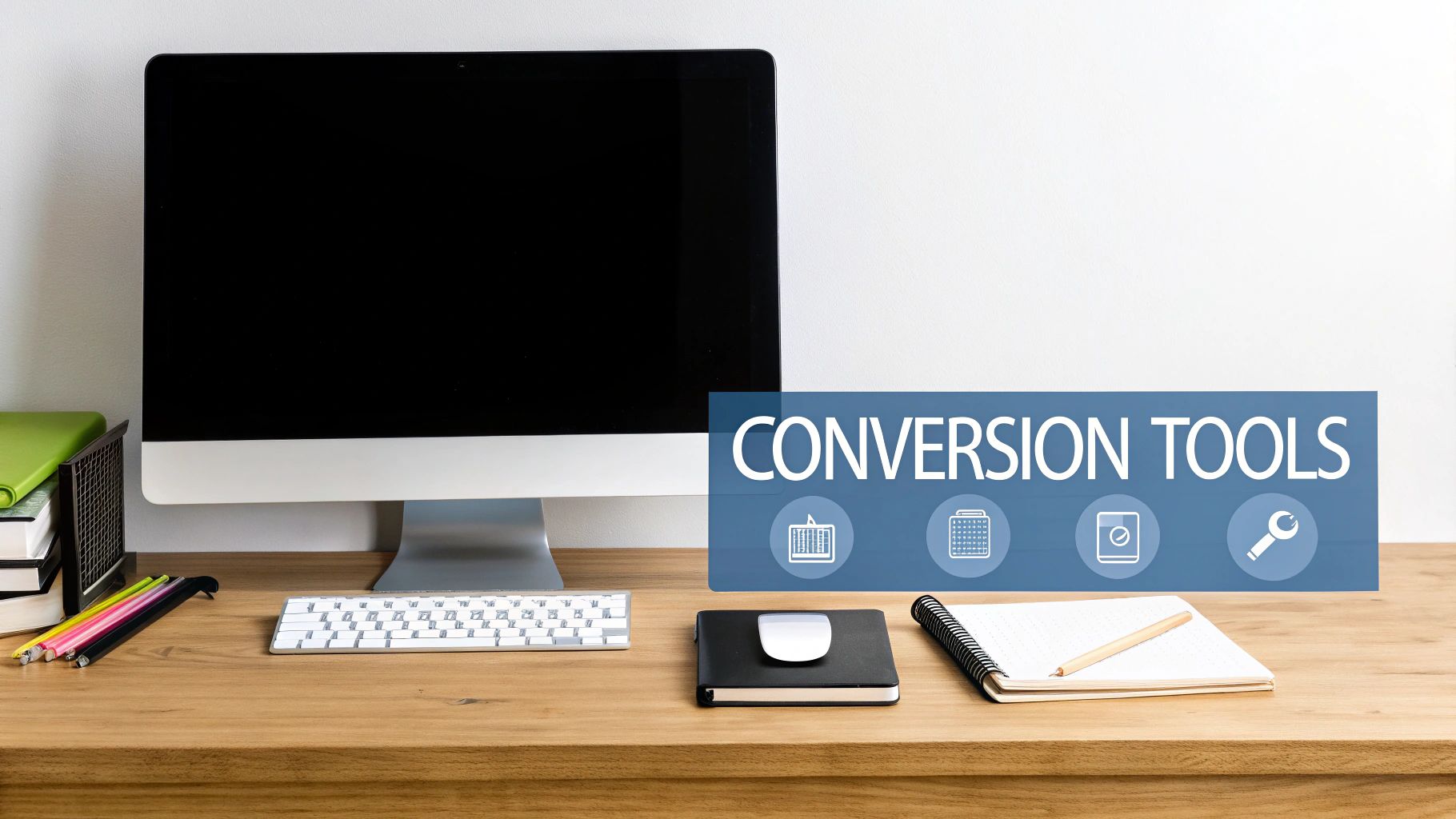
This section offers a practical guide for converting NIfTI files to the DICOM format. We'll explore the necessary preparations, the conversion process, and essential validation checks to ensure a smooth transition.
Preparing Your NIfTI Data
Before starting the NIfTI to DICOM conversion, preparing your files correctly is paramount. This involves checking data integrity and gathering the required metadata. This initial step ensures the accuracy and usability of your converted DICOM files.
- Data Integrity Check: Verify the integrity of your NIfTI file. This means confirming its structure and ensuring it opens without issues in NIfTI viewers.
- Metadata Collection: Collect the necessary metadata, including patient demographics, acquisition parameters, and study details. This information is essential for populating the DICOM header. If this data isn't readily available, consider tools and techniques for metadata extraction or reconstruction.
Executing the NIfTI to DICOM Conversion
With the NIfTI data prepared, you can begin the conversion process. Choosing the right tool is key. PYCAD simplifies this often-complex process.
- Using PYCAD: PYCAD provides a user-friendly platform for efficient and reliable NIfTI to DICOM conversions. Its intuitive interface guides you through the steps, minimizing errors. The platform also prioritizes preserving crucial metadata, a frequent challenge in this type of conversion.
- Alternative Conversion Tools: While PYCAD is a robust solution, other tools like 3D Slicer and dcm2niix offer more specialized approaches or meet specific research needs. However, these tools may require greater technical expertise.
Validating the Converted DICOM Files
After conversion, validate the new DICOM files. This ensures compatibility with DICOM viewers and clinical systems. Metadata verification is crucial for maintaining data integrity and scientific validity.
- Compatibility Testing: Open the converted DICOM files in different DICOM viewers. This verifies they display correctly and contain all the necessary information. This cross-platform check is vital for ensuring broad compatibility.
- Metadata Verification: Carefully check that all essential DICOM tags are correctly populated. Ensure these tags match the original NIfTI metadata if applicable. This step safeguards the scientific integrity of the converted data.
Troubleshooting Common Conversion Issues
Occasionally, you may encounter challenges during the conversion. Understanding common issues and their solutions is key to a successful process.
- Missing Metadata: If key DICOM tags are missing after conversion, explore tools and methods to add this missing information or reconstruct acquisition parameters from existing sources.
- Complex Imaging Sequences: For complex datasets like multi-echo sequences or diffusion images, ensure your chosen tool supports these data types and correctly handles these intricate structures.
Preserving Critical Metadata During Conversion
Converting NIfTI data to the DICOM format for clinical applications requires more than just transforming the image data itself. It also requires careful consideration of the associated metadata. This metadata, embedded within each DICOM file, provides essential context for clinical systems and ensures the diagnostic value of the images. A successful NIfTI to DICOM conversion hinges on correctly preserving, or when necessary, reconstructing, key metadata fields.
Why Metadata Matters in DICOM
Metadata provides crucial context for medical images. Imagine receiving a letter with no return address or date – it becomes difficult to understand its relevance. Similarly, a DICOM image without metadata loses critical information necessary for both patient identification and image interpretation. These metadata elements, known as DICOM tags, encompass a wide range of information.
This can include patient demographics such as name, ID, and birthdate, as well as crucial acquisition parameters like the imaging modality, scan date, and slice thickness. These tags ensure images are correctly identified, sorted, and interpreted by clinical systems and healthcare professionals. Moreover, accurate metadata is a legal requirement for patient privacy and accurate record-keeping.
Strategies for Metadata Preservation During NIfTI to DICOM Conversion
Transferring metadata from a NIfTI file during conversion is crucial for maintaining the clinical utility of the resulting DICOM data. Here are some established methods for ensuring this preservation:
-
Mapping Existing NIfTI Header Information: The NIfTI header often contains valuable information, although not formatted according to the DICOM standard. Tools like PYCAD can map this data to the corresponding DICOM tags. For instance, voxel dimensions from the NIfTI header can be translated to the DICOM tags that specify pixel spacing.
-
Supplementing Missing Metadata: If essential metadata is missing from the NIfTI file, it can be added manually or from associated files. This is particularly important for patient demographic information, which is typically not embedded within the NIfTI format.
-
Reconstructing Acquisition Parameters: In some cases, acquisition parameters like slice thickness or echo time might require reconstruction based on known imaging protocols or related data. Advanced conversion tools can assist in this process with built-in templates for common imaging sequences.
Quality Control and Validation
After conversion, thorough quality control is vital. Verifying the presence and accuracy of key DICOM metadata is paramount to avoid compatibility problems with clinical systems and maintain the scientific integrity of the imaging data. Consider the following steps:
-
DICOM Conformance Testing: Specialized software can validate that the converted DICOM files adhere to the DICOM standard, ensuring interoperability with Picture Archiving and Communication Systems (PACS) and other clinical systems.
-
Visual Inspection of Metadata: Manually review the metadata fields using a DICOM viewer to confirm their accuracy and completeness. This provides a practical method for identifying potential errors or inconsistencies.
To illustrate the importance of metadata preservation, the table below outlines essential DICOM fields.
Essential DICOM Metadata Fields
This table outlines the critical DICOM metadata fields that should be preserved or reconstructed during NIfTI to DICOM conversion, along with their importance and impact on clinical utility.
| Metadata Field | DICOM Tag | Importance Level | Clinical Impact if Missing | Method of Preservation |
|---|---|---|---|---|
| Patient Name | (0010,0010) | High | Inability to properly identify the patient | Manual entry or retrieval from external systems |
| Patient ID | (0010,0020) | High | Difficulty matching images to patient records | Manual entry or retrieval from external systems |
| Study Date | (0008,0020) | High | Challenges in tracking and organizing studies | Extracted from NIfTI header or entered manually |
| Modality | (0008,0060) | High | Incorrect image display or processing | Extracted from NIfTI header or entered manually |
| Pixel Spacing | (0028,0030) | High | Inaccurate measurements and image analysis | Mapped from NIfTI header |
| Slice Thickness | (0018,0050) | Medium | Potential misinterpretation of 3D reconstructions | Extracted from NIfTI header or reconstructed from sequence |
| Echo Time | (0018,0081) | Medium | Affects interpretation of MRI sequences | Extracted from NIfTI header or reconstructed from sequence |
As shown in the table, missing metadata can significantly impact clinical workflows and diagnostic interpretation.
Preserving metadata during NIfTI to DICOM conversion is crucial for seamless integration of converted images into clinical workflows. Using a robust conversion tool, like PYCAD, that prioritizes metadata handling is essential. Careful management of metadata enhances the quality and reliability of imaging data, ultimately contributing to better patient care and more accurate diagnoses.
Future-Proofing Your Conversion Workflow
The medical imaging field is in constant flux, and how we convert between NIfTI and DICOM is no exception. To maintain an efficient and effective conversion workflow, staying abreast of emerging trends is crucial. This means understanding the impact of new technologies and evolving standards on the future of image format conversion.
The Rise of Machine Learning in Metadata Management
Machine learning (ML) is poised to reshape how we manage the intricacies of metadata during NIfTI to DICOM conversion. ML algorithms excel at recognizing patterns. They can be trained to identify and extract pertinent information from NIfTI files, even when the data isn't clearly labeled. This automated population of DICOM tags from NIfTI data has the potential to significantly decrease manual work and minimize errors.
For example, ML algorithms can learn to predict missing DICOM tags based on the existing data, improving the accuracy of acquisition parameter reconstruction. These algorithms can also contribute to quality control by identifying inconsistencies or potential errors within the converted DICOM files.
Automating Conversion Decisions With AI
Beyond metadata management, artificial intelligence (AI) can automate complex conversion decisions. AI algorithms can learn optimal conversion settings based on the specific traits of the imaging data. This allows researchers to automate the whole conversion process, from choosing the right tools to fine-tuning parameters for specific datasets. This automation saves valuable time and resources, allowing researchers to concentrate on their primary work.
Evolving Standards and Interoperability
The ongoing development of both the NIfTI and DICOM standards will inevitably influence future conversion workflows. Initiatives promoting interoperability aim to improve the seamless exchange of medical imaging data, regardless of the format. These initiatives may result in new tools and techniques for NIfTI to DICOM conversion that simplify the process and improve metadata preservation. Open-science initiatives are also encouraging data sharing and accessibility, creating a higher demand for efficient and dependable conversion methods.
Building Adaptable Conversion Pipelines
Building adaptable pipelines is essential to future-proof your NIfTI to DICOM conversion workflow. This involves selecting tools and methods that can be easily updated to incorporate new standards and emerging technologies. For example, consider using modular conversion tools that can be readily configured or expanded with new features.
Embracing cloud-based solutions is also beneficial. They allow for seamless updates and integration with other imaging tools. By staying informed and implementing adaptable strategies, researchers can ensure their conversion workflows remain efficient, accurate, and in line with the changing needs of the medical imaging field.
Ready to streamline your NIfTI to DICOM conversions and harness the potential of AI in medical imaging? Explore PYCAD's solutions and learn how we can help optimize your imaging workflow. Visit us today at https://pycad.co.



